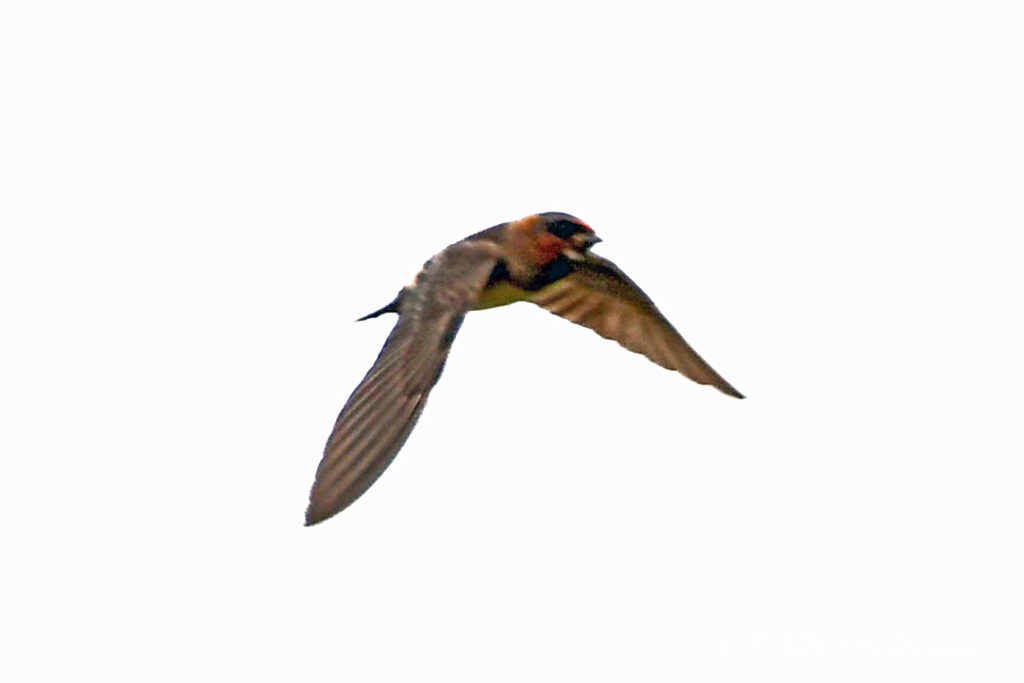The Cliff Swallow (Petrochelidon pyrrhonota) is a small passerine bird in the Hirundinidae family, with an average length of 5.1-5.9 inches (13-15 cm) and a weight of 0.5-0.7 oz (14-20 g). This bird has a distinct appearance, with a dark blue-black cap on its head, a light brownish-orange throat, and a square tail. Its wings are long and pointed, and its body is relatively stocky compared to other swallows.

The most distinguishing field mark of the Cliff Swallow is its unique mud nests, which they construct on vertical surfaces, such as cliff faces, bridges, or buildings. These nests are shaped like a half-cup and have a long, tubular entrance on the top side, allowing the birds to enter and exit. These nests can be found in large colonies, with hundreds or even thousands of nests together, making for a fascinating sight.
Cliff Swallows are migratory birds, and their range spans across most of North America, from southern Canada to Central America. They breed throughout western North America, including Alaska, and then migrate south in the fall to spend the winter in Central America. In recent years, however, some populations of Cliff Swallows have been known to overwinter in the southern US, which has caused them to shift their breeding range farther north.
During the breeding season, Cliff Swallows feed primarily on insects, including flies, wasps, and bees, which they catch in mid-air. These birds can be seen darting and swooping through the air as they chase after their prey, often in large flocks. In the winter, they switch to a diet of fruits and seeds, which they can find in abundance in the tropical areas where they spend the season.

Overall, the Cliff Swallow is a fascinating bird with its unique appearance, remarkable nesting habits, and migratory behavior. Its importance to the ecosystem as a predator of insects is significant, and its presence is a welcome sight for birdwatchers and nature enthusiasts alike.


